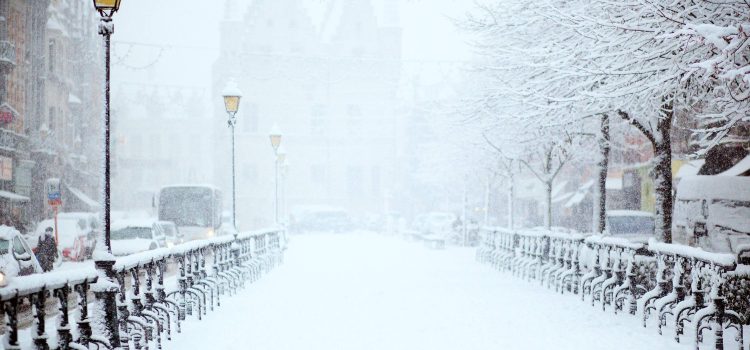
From California to New York, the United States has been hit with extreme winter weather in recent weeks. Snowfall records have been shattered, power outages have occurred, and travel plans have been disrupted. But what is causing these intense snowstorms? Is it just a typical winter season or is there something more going on? In this blog post, we’ll explore the science behind why the West got buried in snow and how meteorological factors contributed to these historic storms. So bundle up and let’s dive into the fascinating world of weather patterns!
What is a weather pattern?
Weather patterns refer to the overall trends in weather conditions that occur over a specific area during a defined period. A weather pattern is determined by various meteorological factors, including temperature, air pressure, humidity levels, and wind direction. These factors interact with each other to influence the atmospheric conditions of an area.
One important aspect of studying weather patterns is understanding how they affect our daily lives. For instance, knowing when a cold front or heatwave is coming can help us prepare accordingly and avoid potential health risks. Similarly, understanding precipitation patterns can aid farmers in planning their crops for optimal growth.
Weather patterns are not static; they are continually changing based on localized circumstances and global climate shifts. Studying these changes allows meteorologists to predict future weather patterns with greater accuracy.
By analyzing multiple variables such as prevailing winds or ocean temperatures from different points in time, scientists work towards developing more sophisticated models that may lead to better long-term forecasts. Understanding weather patterns helps us make informed decisions regarding everything from outdoor activities to disaster preparedness plans implemented by municipalities across the world
The Polar Vortex
The Polar Vortex is a term that has been popping up in the news lately, and for good reason. It’s an atmospheric phenomenon that occurs regularly during the winter months but this year it has been especially intense.
The Polar Vortex is essentially a large area of low pressure and cold air surrounding both of the Earth’s poles. During winter, when there is less sunlight hitting the poles, temperatures can drop to -130°F or lower in some areas.
When the vortex weakens, as it did this year, it can cause frigid air to spill southward into North America causing extremely low temperatures and snowfall events. The weakened vortex can also lead to sudden warming episodes which disrupt normal weather patterns leading to more extreme weather conditions.
While many people are blaming climate change for these extreme weather events, experts say that it’s still too early to draw such conclusions. However, with increasing global temperatures disrupting ocean currents which have a direct impact on polar winds and temperature gradients , we may see more severe polar vortex outbreaks in future winters.
The West Coast Storm
The West Coast Storm that hit California in early 2021 was a massive weather pattern that brought heavy rains, strong winds, and even snow to some areas. The storm caused power outages, flash flooding, mudslides and road closures throughout the region.
The cause of the West Coast Storm was due to a low-pressure system off the coast of California which drew moisture from the Pacific Ocean and created unstable atmospheric conditions. This resulted in heavy precipitation along with strong gusts of wind that battered coastal cities such as San Francisco and Los Angeles.
One significant impact of this storm was on agriculture in California where many farmers rely on rainwater for their crops. After years of droughts in the state, this storm provided some relief as it replenished water levels in reservoirs but also caused damage to farmland.
Additionally, the West Coast Storm had an environmental effect on marine life living near shorelines as it disrupted their habitats by causing waves and currents to become more turbulent than usual.
While Californians welcomed much-needed rainfall after severe dryness over previous years; however they were also left cleaning up damage associated with mudslides or floods resulting from higher-than-normal rainfall totals.
The East Coast Storm
The East Coast Storm was a massive blizzard that hit the eastern part of the United States in late January 2021. The storm brought heavy snowfall, strong winds, and freezing temperatures to cities like New York City, Boston, and Philadelphia.
The storm left thousands of people without power and caused travel disruptions across the region. Schools were closed, flights were canceled or delayed, and public transportation was severely impacted.
So what caused this massive winter storm? It all comes down to a weather pattern known as an “atmospheric river.” This is a long stream of moisture that originates over the ocean and moves inland. In this case, it collided with cold air from Canada to create perfect conditions for a major snowstorm.
But atmospheric rivers aren’t uncommon on the West Coast – so why did it cause such chaos on the East Coast? The answer lies in another weather phenomenon called the Polar Vortex which pushed Arctic air southward into many parts of North America.
While individual storms cannot be definitively linked to climate change alone; we’ve seen more frequent extreme weather events due to global warming trends.
What caused these storms?
The West Coast and East Coast storms were caused by two different weather patterns that collided over North America, resulting in the heavy snowfall. On the West Coast, a strong atmospheric river brought warm moisture from the Pacific Ocean onto land, while a cold high-pressure system moved south from Canada. When these two systems met over the Sierra Nevada mountains, it created an intense precipitation event.
Meanwhile, on the East Coast, an area of low pressure formed off the coast of Florida and rapidly intensified as it moved northward towards New England. This “bomb cyclone” was fueled by warm Gulf Stream waters colliding with cold Arctic air masses from Canada. The interaction between these opposing temperature systems created strong winds and heavy snowfall along the Eastern seaboard.
These storms were caused by complex interactions between various weather patterns: atmospheric rivers on one side of the country and bombogenesis on another. While some experts attribute climate change to more frequent extreme weather events like these storms; others caution against making definitive links until there is more scientific data available to support such claims.
Conclusion
The recent snowstorms that have hit the West and East coasts of the United States were a result of complex weather patterns. The Polar Vortex played a significant role in bringing cold air down from Canada and into the US, which then collided with moisture-laden systems moving across the country. This collision caused heavy snowfall and blizzard conditions.
It’s important to note that while individual weather events cannot be directly attributed to climate change, scientists predict that more extreme weather events will occur as our planet continues to warm. It’s crucial for us to take action now to reduce greenhouse gas emissions and mitigate further damage to our environment.
As we continue to study these meteorological phenomena, we can better understand how they affect us on both a local and global scale. By staying informed about changing weather patterns and making sustainable choices in our daily lives, we can work towards creating a safer, healthier future for ourselves and generations to come.










